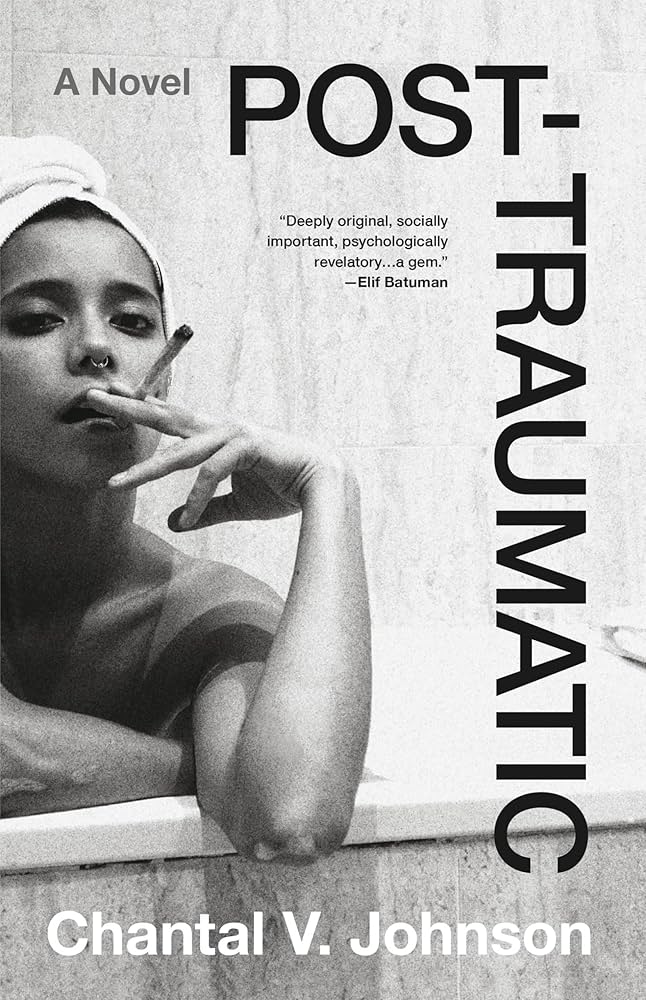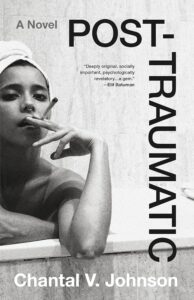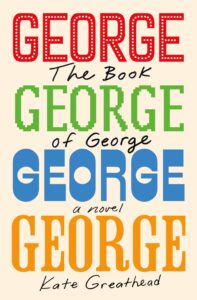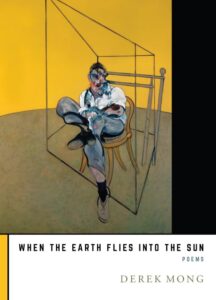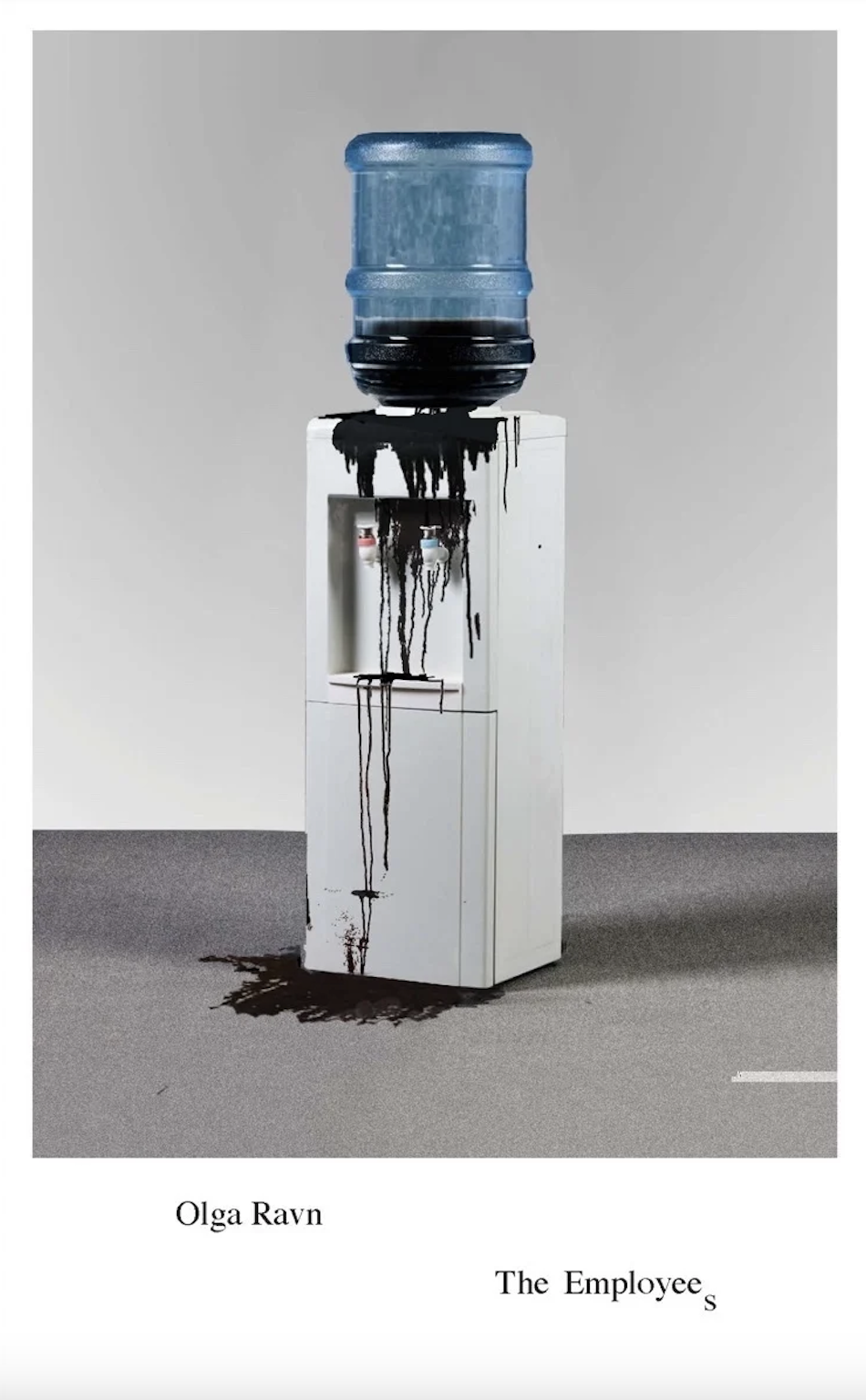Curated by SAM SPRATFORD
If you’re in need of a deep breath amid the holiday frenzy, look no further. This month, Issue 28 poets and longtime TC contributors OLENA JENNINGS and ELIZABETH HAZEN bring you three recommendations that force you to slow down and observe. Hazen’s picks provide an intimate window into the paradoxical, tragic, and sometimes ridiculous characters that inhabit our world, while Jennings’ holds up a mirror to readers, asking them to meditate on the act of viewing itself.
|
|
Chantal V. Johnson’s Post-Traumatic and Kate Greathead’s The Book of George; recommended by Issue 28 Contributor Elizabeth Hazen
Typically, I have a few books going at once, and I am almost always at the very least reading one physical book and listening to another. Often, the pairings reveal interesting connections, and my most recent reads—Kate Greathead’s latest, The Book of George, and Chantal V. Johnson’s debut, Post-Traumatic—did not disappoint.
Both books are contemporary, the former out just this October, the latter in 2022, and feature protagonists who are deeply flawed but trying to figure out who they are. They hail from starkly different backgrounds, though, and this determines the starkly different difficulties they encounter as they navigate adulthood.
The titular George is a white male from a privileged background. The novel chronicles him from age twelve to thirty-six. He is a bright, creative child, but he never really grows out of the adolescent self-absorption that defines his early life. George has lofty goals but lacks follow-through. He is both incredibly confident—arrogant even—and cripplingly insecure. The people around him—his long-suffering girlfriend, his mother, his sister—are exasperated by his selfishness, but also seem to be waiting for him to finally be the good person they believe exists deep inside.
Vivian, the protagonist in Post-Traumatic, is Black and Latinx and grew up in a working-class family. Furthermore, she is a survivor of childhood sexual abuse, and over the course of the novel she works through that trauma. Vivian is a successful lawyer, but she only feels relaxed when she is smoking weed and hanging out with her bestie, a fellow-survivor. She lives in fear of being attacked, and she has an eating disorder that governs much of her day-to-day life, allowing her both a sense of control and an external measure of “success.”
Despite Post-Traumatic’s heavy subject matter, both novels use satire to shed new light on familiar and timely contradictions—the crisis of the privileged millennial man, and the way social justice movements so often sideline people (especially women) of color. In both novels, the characters don’t miraculously become wholly likeable, but they do develop in complex ways that ring true, and the authors in both cases treat their subjects with empathy, getting to real human questions of what it means to be an adult, how our childhoods shape us, and how we can learn to stop being our own worst enemies. Though I write poetry, I turn to novels both to escape my world and to better understand it. These novels gave me exactly what I was looking for.
Derek Mong’s collection When the Earth Flies into the Sun draws a connection between the intimacy of personal life and the greater world. It connects disparate images and questions how to view them.
The narratives about Lucian Freud (artist and grandson of Sigmund) are ekphrastic, inspired by paintings by Francis Bacon. Mong addresses the careful, fragile act of viewing and the fragile world created in the act of viewing. “Do you wanna keep looking? I do, my love, I do” resounds. Mong also writes about the consequences of art, including a reminder that popular culture is a type of art, despite its consequences. In “The Reality Television Star,” he observes how “I view myself everywhere,” and, elsewhere, probes the reader—“Did you grasp the casualties of imagination?”
In general, we view the poems with their structure, created with spaces and silences within the lines asking us to read slowly. Some of Mong’s poems, however, are compact. “The Ghost Ship” stands out the most with its eerie landscape. There the protagonists view the force of the sea that returns in “A Poem for the 21st Century” with “you walk the shore/ where ties seems to stall/ and track the erosion.” Another one of the poems, the “Ode to Asklepios,” the Greek God of medicine and healing, is more experimental. The words feel like collage. They stretch their meanings and connect through rhymes.
I feel connected to Mong’s act of viewing from within the comfort of family life. We traverse museums, landscapes, and galaxies. Lines like the “wound of our love” that is “red of rare steak, gray like smudged lace” compose the lace of the poems, a beautiful lattice of words that draws me into the book and asks me to weave in my own experiences.
